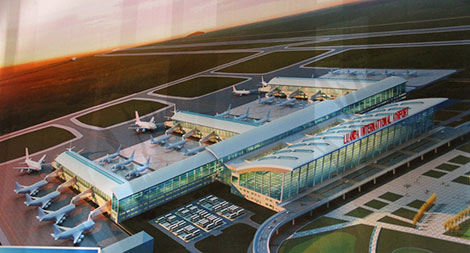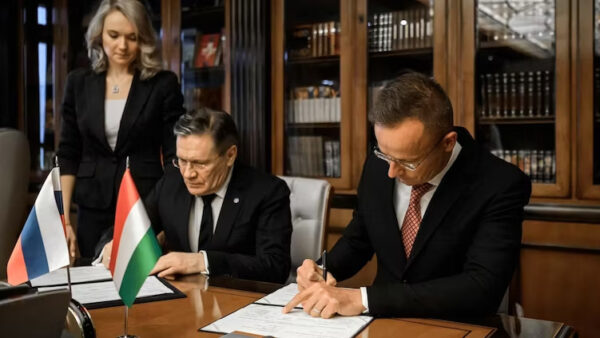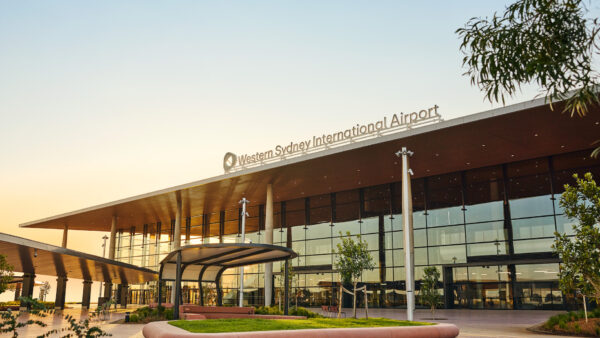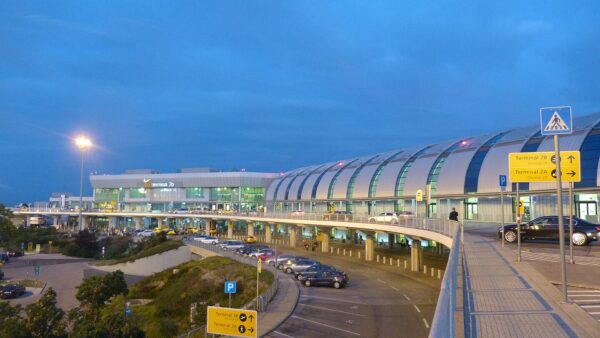UK-based construction manager Mace Group will take control of the troubled project to build Angola’s new $3.8bn international airport, financed through a Chinese firm that started work on it 11 years ago.
Mace says that, when complete in 2017, the new Luanda International Airport will be able to handle 15 million passengers and 50,000 tonnes of cargo a year.
The Ministry of Transportation has concluded that appointing an international project management company to manage and supervise the remaining construction works is required– Mace Group
That would give this war-scarred, oil-rich African country a big airport that is slightly busier than Cairo International, and second in capacity on the continent only to Johannesburg’s OR Tambo International.
It will replace the country’s existing airport (pictured), which can handle only 2 million passengers a year.
The new airport will have two runways, one 4.2km long, for the A380 airbus, and one 3.8km in length, according to Mace, while the 170,000-sq-m terminal will have three piers with ten gates per pier. The project also entails a rail link to the capital, Luanda, approximately 30km away.Â
Curious background
Work is reported to have begun on the airport in 2004 – two years after the end of Angola’s devastating, 27-year civil war – and was initially due to be finished in 2010, a target that has receded ever since.
The company financing and building the airport, China International Fund Ltd. (CIFL), is not a typical construction company.Â
Set up in 2003, just as China was opening a big line of credit for reconstruction in Angola, CIFL is the public face in the African country for a complex syndicate of Chinese investors with reported close links to both the Angolan and Chinese governments.
(This syndicate has roused the curiosity of the United States. A 2009 report by the US-China Economic & Security Review Commission called it the “88 Queensway Group” because more than 30 linked companies give as their address the same place in Hong Kong: 10/F Two Pacific Place, 88 Queensway.)
As well as the airport, CIFL has many other ongoing and completed projects in Angola, according to its website, including 1,600km of highway restoration, more than 2,600km of railway restoration, water and sewerage reconstruction, and the building 215,500 public housing units in Luanda and 17 other provinces.
Bail out

The new airport will have two runways and a 170,000-sq-m terminal with three, 10-gate piers (Mace)
Its track record has taken a number of public knocks. A number of projects were said to have been stalled, and in 2010 an unnamed Chinese official told the prominent Angolan journalist, Rafael Marques de Morais, that, “Largely they are brokers who get contracts from the Angolan government and sell them to other Chinese companies for huge profits.” (See article in the journal, World Affairs.)
Somewhat bizarrely for a financier, CIFL had to be bailed out in 2007 by the Angolan government. It ran into financial difficulty, and the Angolan Ministry of Finance was obliged to raise capital by issuing treasury bonds to the value of $3.5bn in order to fund CIFL projects, including the new airport.Â
Fresh start
With Mace Group now on board, Angolans and travellers will be hoping for a fresh start, and a definite finish, to the long-delayed project.Â
Angola’s existing airport, Quatro de Fevereiro International, can handle only 2 million passengers a year and, by accounts, is currently bursting at the seams.
Mace is no stranger to big, high profile projects. It was one third of the consortium responsible for delivering the the infrastructure and venues for the London 2012 Olympic and Paralympic Games.
The company did not respond to an interview request but, in its press release, hinted at the project’s difficult background, saying: “the Ministry of Transportation has since concluded that appointing an international project management company to manage and supervise the remaining construction works is required to ensure the delivery of this airport meets international aviation standards.”
CIFL did not respond to an interview request either.
Photograph: Angola’s existing airport, Quatro de Fevereiro International, can handle only 2 million passengers a year and is currently bursting at the seams (L.Willms/Wikimedia Commons)






